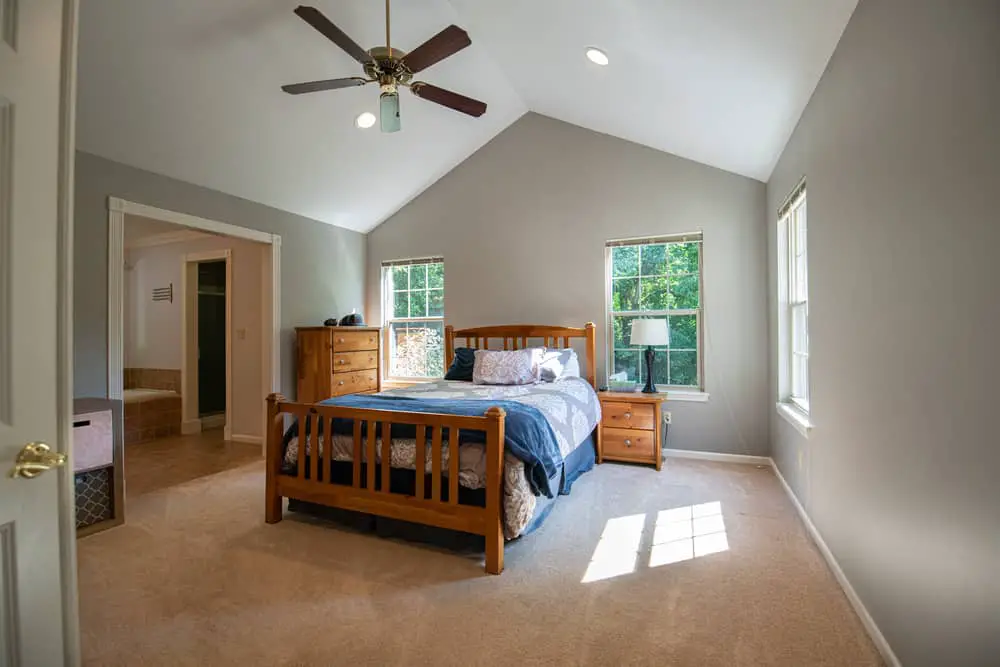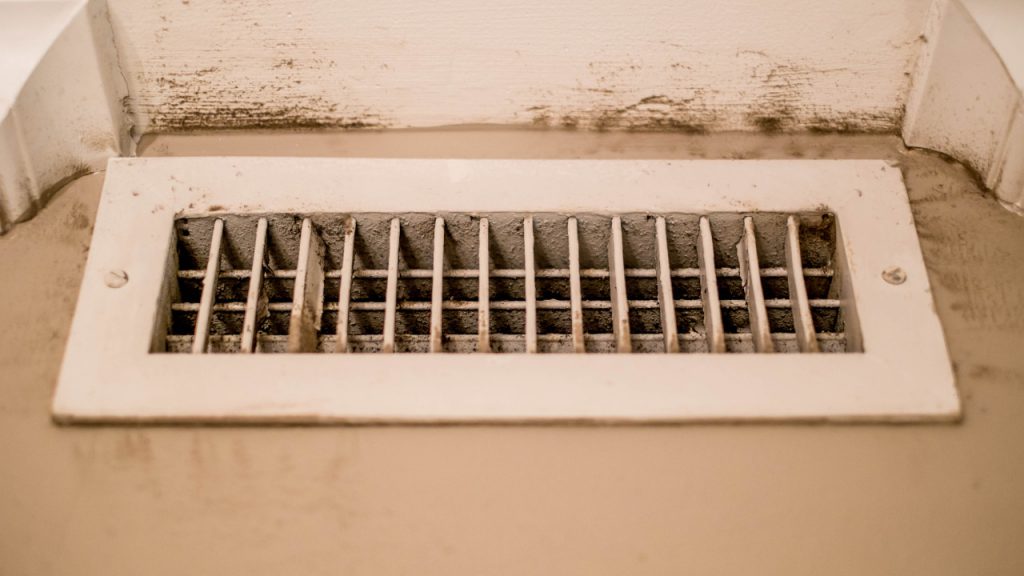Have you ever woken up in the middle of the night feeling uncomfortably cold, only to discover your toes are practically touching a cold, drafty floor vent? While the idea of placing your bed over a floor vent might seem like a convenient way to combat chills, it could lead to a few unintended consequences. So, can you put a bed over a floor vent? The short answer is it depends.

Image: mobilehomerepairtips.com
This question is one that many homeowners face, especially during the colder months. The solution of simply moving your furniture might seem appealing, but it isn’t as straightforward as it might seem. The potential ramifications of placing a bed over a floor vent can range from discomfort and inefficient heating to potential safety hazards.
Understanding Floor Vents and HVAC Systems
How Floor Vents Work
Floor vents, often incorporated into forced-air heating and cooling systems, are essential components of your home’s climate control. They act as the final point of distribution, directing heated or cooled air throughout your living spaces. A well-designed HVAC system ensures proper air circulation, allowing for optimal comfort in your home.
The Importance of Airflow
The effectiveness of a forced-air HVAC system hinges on proper airflow. When vents are obstructed, the system can lose efficiency and lead to several problems:
- Uneven Heating & Cooling: Blocked vents can create hot or cold spots in your home, making it difficult to achieve comfortable temperatures throughout.
- System Strain: Your HVAC unit has to work harder to push air through obstructed vents, leading to increased energy consumption and even potential damage to the system.
- Reduced Air Quality: Restricted airflow can lead to dust and allergens being trapped in the system, affecting the overall air quality in your home.
- Safety Hazards: Extreme airflow restrictions could cause the system to overheat, leading to potential fires.

Image: constructionhow.com
The Risks of Placing a Bed Over a Floor Vent
Reduced Airflow
The most immediate consequence of placing a bed over a floor vent is reduced airflow. This can lead to the issues mentioned above, including uneven heating and cooling, increased energy consumption, and poor air quality. Additionally, blocking the vent can create a buildup of heat within the system, potentially leading to mechanical malfunctions.
Health Risks
Reduced airflow and uneven heating can also create a breeding ground for mold, dust mites, and other allergens. This can pose a health threat, especially for individuals with respiratory conditions or allergies. The lack of proper ventilation can also trap stale air and moisture, contributing to a musty smell and potentially attracting pests.
Safety Considerations
While not a common occurrence, it’s important to consider safety hazards associated with placing a bed over a floor vent. A hot vent can pose a fire risk if flammable materials are kept too close. Furthermore, a buildup of heat and pressure within the HVAC system, caused by obstructed airflow, could lead to a malfunction or even a system failure.
Alternatives to Blocking Vents
Instead of placing your bed over a vent, consider exploring alternative solutions to combat the cold:
- Invest in a Floor Register Cover: Specialized covers allow you to adjust airflow while keeping the vent open and functional. Many options are available, including adjustable louvers, deflectors, and even heating elements that can warm the air before it exits the vent.
- Utilize a Space Heater: A personal space heater can provide focused warmth without affecting the overall HVAC system. Choose a heater with safety features and a thermostat for controlled warmth.
- Layer Clothing: Warm pajamas, blankets, and cozy socks can keep you warm without the need to obstruct vents.
- Adjust Your Thermostat: A slight increase in room temperature can be another effective way to combat the cold without blocking vents. Remember to adjust the thermostat based on your personal comfort preferences and energy efficiency goals.
When Can You Put a Bed Over a Floor Vent?
While generally discouraged, there are some instances where placing a bed over a floor vent might be acceptable. This doesn’t make it a good idea, but it might be the only practical option. Here are a few scenarios:
- Room Ventilation: If the room has good ventilation from windows or other vents, the impact of blocking one vent might be minimal. However, it’s still important to monitor the room’s temperature and ensure the rest of the HVAC system is functioning properly.
- Limited Space: In smaller rooms with limited furniture arrangement options, placing a bed over a vent could be the only solution. However, it’s crucial to prioritize good ventilation in other areas of the house and address the reduced airflow in this room.
- Inactive Vent: You might be able to safely place a bed over a vent that is not actively used, such as a vent that serves a closet or an unused room. Make sure to check that the vent is truly inactive and not connected to the main HVAC system.
Beyond the Bed: Other Objects to Avoid Placing Over Vents
It’s important to understand that the principle of avoiding obstruction applies to all vents, not just those beneath your bed. Other items to keep away from vents include:
- Heavy Furniture: Placing heavy objects like sofas, bookcases, or large appliances over vents could create additional pressure on the system, leading to damage or leaks.
- Curtains or Drapes: While curtains might seem inconsequential, they can significantly restrict airflow if they’re hung directly over the vents. Consider using lightweight curtains or adjusting their placement to avoid blocking airflow.
- Rugs or Carpets: Thick carpets or rugs can trap air and restrict its flow through the vents, reducing the efficiency of your HVAC system. Opt for rugs with a high pile and avoid placing them directly over vents.
Can You Put A Bed Over A Floor Vent
Conclusion
Placing a bed over a floor vent is generally discouraged due to the potential risks associated with reduced airflow, increased energy consumption, and potential safety hazards. It is important to prioritize proper ventilation and air circulation in your home for optimal comfort, safety, and energy efficiency. While there might be scenarios where a bed placed over a vent is unavoidable, it is always best to explore alternative solutions to maintain proper heating and cooling throughout your home. Consider adjusting your furniture arrangement, utilizing space heaters or floor vent covers, and maintaining a vigilant approach to your home’s climate control by ensuring proper airflow and ventilation. By understanding the importance of air circulation and addressing any potential obstructions, you can create a comfortable and safe living environment for yourself and your loved ones.





